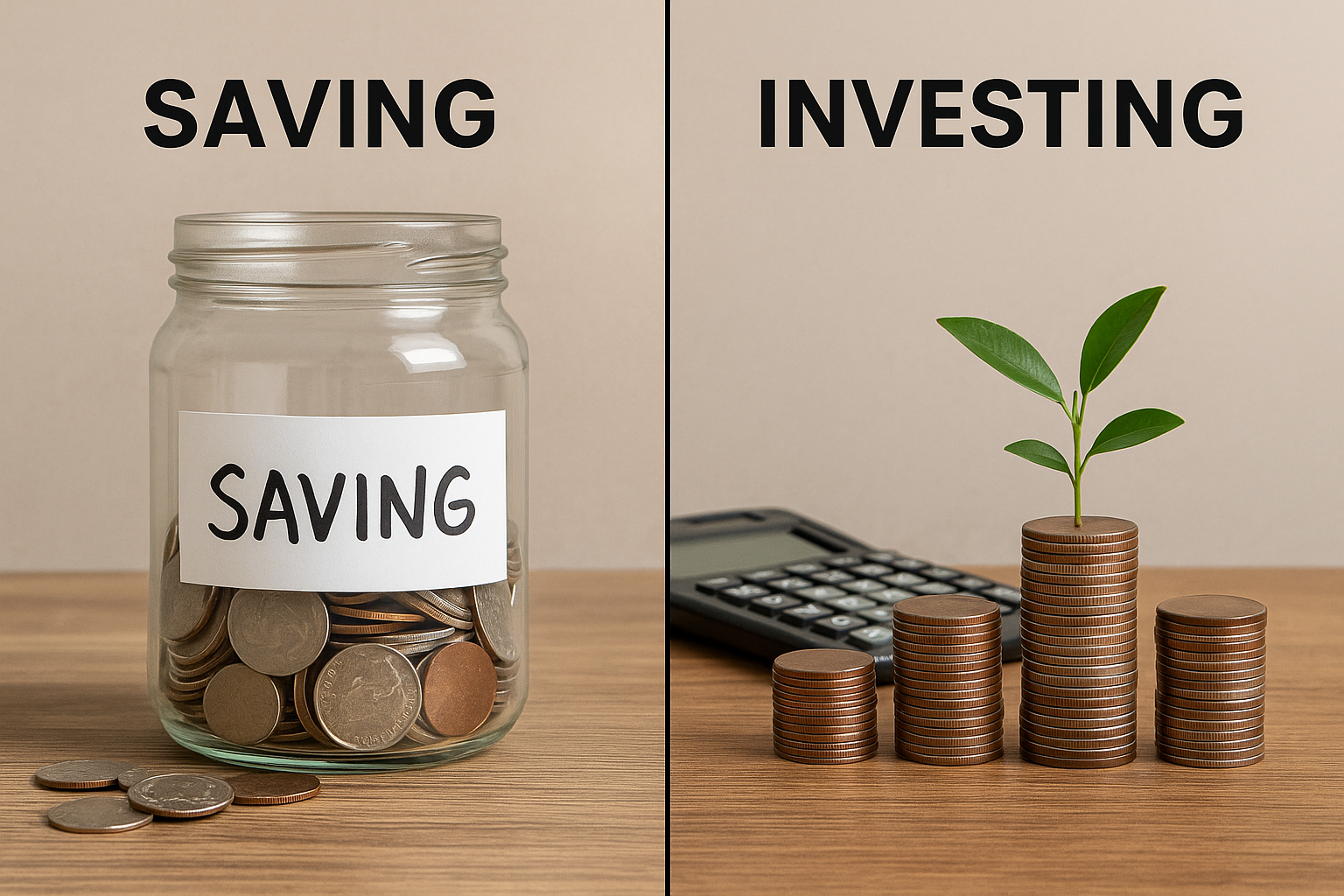When it comes to managing money, two fundamental financial strategies often come up: saving and investing. While they may seem similar at first glance, they serve very different purposes and play distinct roles in your financial life. Knowing when to save and when to invest is key to building a stable financial future.
In this article, you’ll learn the core differences between saving and investing, their respective benefits and risks, and how to determine which approach is best for your current situation.
What Is Saving?
Saving refers to setting aside money for future use—typically in a safe and easily accessible place. It’s about preserving your capital rather than trying to grow it significantly.
Common Ways to Save:
- Savings accounts in banks or credit unions
- Certificates of Deposit (CDs)
- Money market accounts
- Cash or emergency envelopes (for short-term needs)
Savings are usually held in low-risk, low-return accounts. The goal is security and liquidity, not high earnings.
When to Save:
- Building an emergency fund
- Planning for a short-term goal (less than 3 years)
- Preparing for unexpected expenses
- Making a large purchase, like a car or vacation
Pros of Saving:
- Low or no risk of loss
- Easy access to funds
- FDIC insurance (up to $250,000 per depositor per bank)
- Peace of mind for short-term financial needs
Cons of Saving:
- Low returns—typically below inflation
- May lose purchasing power over time
- Not suitable for building long-term wealth
What Is Investing?
Investing involves putting your money into assets with the goal of growing your wealth over time. These assets can include stocks, bonds, mutual funds, ETFs, real estate, and more.
Common Ways to Invest:
- Stock market
- Mutual funds or ETFs
- Real estate
- Retirement accounts (e.g., 401(k), IRA)
- Cryptocurrency (higher risk, speculative)
Investing always comes with some level of risk, but the potential returns are generally much higher than traditional savings.
When to Invest:
- Saving for retirement
- Planning for long-term goals (5+ years)
- Growing your net worth
- Earning passive income through dividends, interest, or capital gains
Pros of Investing:
- Higher potential returns
- Can beat inflation over the long run
- Helps build significant wealth
- Multiple strategies to match your risk tolerance
Cons of Investing:
- Market risk—possibility of losing money
- Returns are not guaranteed
- May require more research or advice
- Less liquid (especially with long-term investments)
Key Differences at a Glance
| Feature | Saving | Investing |
|---|---|---|
| Purpose | Preserve money | Grow money |
| Risk Level | Low or none | Moderate to high |
| Return Potential | Low | Moderate to high |
| Liquidity | High | Varies |
| Time Horizon | Short-term | Long-term |
| Tools Used | Savings account, CDs | Stocks, bonds, ETFs, real estate |
| FDIC Insurance | Yes (in banks) | No |
How to Decide: Should You Save or Invest?
The right choice depends on your goals, timeline, and risk tolerance. Here are a few examples to help you decide:
Scenario 1: Emergency Fund
You should save this money in a high-yield savings account or money market account. You want the money to be safe and immediately available.
Scenario 2: Retirement in 30 Years
This is a long-term goal, so investing makes sense. Consider using retirement accounts that offer tax advantages and long-term growth.
Scenario 3: Buying a House in 2 Years
It’s best to save, as you can’t afford to risk losing the down payment to a market downturn.
Scenario 4: Child’s College Fund (in 10+ years)
Investing in a diversified portfolio, such as a 529 plan, can provide higher returns over time.
Blending Saving and Investing
The good news is you don’t have to choose just one. A healthy financial plan uses both:
- Savings give you a safety net.
- Investments help you build wealth.
Start by building your emergency fund, then gradually begin investing for long-term goals. As your income and confidence grow, you can allocate more toward investments.
Rule of Thumb:
- Save at least 3–6 months of expenses in an emergency fund.
- Pay off high-interest debt (like credit cards).
- Begin investing regularly, even with small amounts.
Common Myths About Saving and Investing
❌ “Investing is only for the rich.”
Truth: Many platforms allow you to invest with as little as $10.
❌ “Saving is enough for retirement.”
Truth: Due to inflation and low returns, relying on savings alone often falls short.
❌ “Investing is gambling.”
Truth: Gambling is based on chance. Investing is based on research, risk management, and long-term strategies.
Final Thoughts: Balance Is the Key
Saving and investing aren’t enemies—they’re allies. Think of saving as your foundation and investing as your growth engine. A strong financial future requires both.
By understanding when and how to use each, you’ll be better equipped to face life’s challenges, meet your goals, and enjoy peace of mind along the way.

